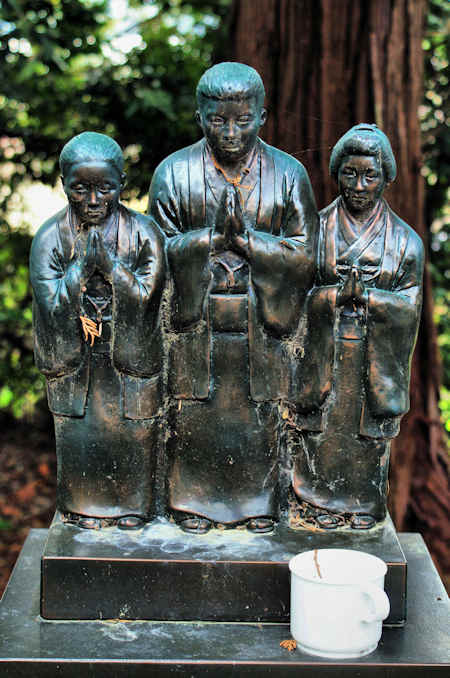Showing posts with label kyushu108. Show all posts
Showing posts with label kyushu108. Show all posts
Thursday, February 29, 2024
Tsurugake Kannon Saifukuji Temple 76 Kyushu pilgrimage
Labels:
cave,
Fudo Myojin,
kannon,
kyushu108,
mizuko jizo,
temple
Sunday, February 25, 2024
Sechibaru Coal Mine Museum
Tuesday, February 20, 2024
The Forest at Oyamazumi Shrine in Sechibaru
Called Tsuburajii in Japanese, the dead wood of the Japanese Chinquapin is one of the best hosts for shiitake mushrooms and is actually the origin of the word shiitake itself. a combination of the Japanese kanji for tsuburajii(椎) and take (mushroom)(茸).
Labels:
chinquapin,
komainu,
kyushu108,
nagasaki,
natural monument,
oyamazumi,
Shrine
Saturday, February 17, 2024
Saikoji Temple 73 on the Kyushu Pilgrimage
The temple was founded in 1687 and was supported by the successive lords of the Hirado Domain.
,
Wednesday, February 14, 2024
Great Fudo at Saikoji Temple
It is actually located in its own car parking area across the road from the temple grounds as it is known for traffic safety due to the inscription which says "Turn great hardships into small hardships, and small hardships into safety".
Saikoji is a Shingon temple and is number 73 on the Kyushu pilgrimage.
Labels:
Fudo Myojin,
kyushu108,
nagasaki
Sunday, February 11, 2024
Norito Shrine
The main kami enshrined here is Iwainushi, believed to be a version of Futsunushi, a martial deity connected to swords and Katori Shrine who was an emissary from Amaterasu to Okuninushi and is claimed as the ancestor of the Mononobe Clan and later the Nakatomi/Fujiwara.
Labels:
futsunushi,
inari,
kyushu108,
Shrine,
torii
Subscribe to:
Posts (Atom)


































































